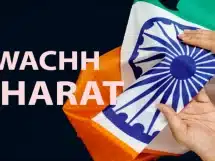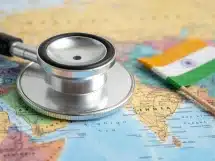Kruxd examines the number of suicides reported in India between 1964 and 2021 by the National Crime Records Bureau of India
India saw a roughly 70 percent increase in suicide rates from 7.1 per 100,000 people in 1964 to 12 per 100,000 people in 2021. In terms of numbers, there were 164,033 suicides in 2021, up from 33,625 in 1964.
The increase hasn’t been steady though. In 1981, the number dropped to 5.8 per 100,000 people. There were a few dips after 1999 and 2010 also before the graph went up again over the last decade.
States with the highest number of suicides
The second-most populous nation, Maharashtra, recorded highest number of suicides in 2020 (22,207), followed by Tamil Nadu (18,925), Madhya Pradesh (14,965), West Bengal (13,500), and Karnataka (13,056). According to data, from 2019 to 2021, these five states reported more suicides than the national average.
Together, these five States accounted for 50.3 percent of all suicides reported nationwide.
However, in terms of the number of suicides per 100,000 people, Sikkim with 39.2 suicides per 100,000 people figures at the top followed by Kerala with 26.9, Telangana (26.9), Chhattisgarh (26.4) and Tamil Nadu (24.7).
Despite being the most populous state, Uttar Pradesh has a relatively smaller percentage share of suicide fatalities, making up only 3.6 percent of all suicides reported in the country in 2020.
In the union territories, the most suicides were reported in Delhi (2,840), followed by Puducherry (504).
What causes suicides?
Family issues and illness were the main contributors to suicides in 2020, accounting for 33 percent and 19 percent of all suicides, respectively. Four major ailments that caused most suicides were mental health (13,792), cancer (1,246), paralysis (1199) and AIDS or STD (125)
Other factors that contributed to suicides were drug abuse, marital problems, extramarital affairs, bankruptcy or debt, unemployment, professional and career issues, death of a dear person, property dispute and poverty etc.
Occupations and suicides
More than 37,000 daily-wage earners took their lives in 2021, followed by 23,178 house-wives.
Interestingly more suicides were reported among self-employed people (20,231) than among the jobless (13,714). They were followed by professionals and salaried people (15,870), students (13,089) and people working in the farming sector (10,881).
Common methods of suicides
More than 93,580 people in 2021 committed suicide by hanging, 41,197 people ingested poison, 8,370 people drowned themselves, 4,195 people set themselves ablaze, and 3,974 people jumped under trains. Other methods of suicide included using firearms, self-injury, jumping by touching electric wires, and taking sleeping pills.
Media reports abet suicide
There is evidence that suicidal behavior impacts people in the immediate vicinity. Suicide-related stories in the media have been shown to increase the rate of suicide. Suicide contagion is significantly influenced by the way it is reported in the media, with dramatic headlines and prominently displayed front page stories being linked to increases in suicide rates.
Suicide prevention measures in India
In September 2020, the Ministry of Social Justice & Empowerment introduced “Kiran,” round-the-clock mental health helpline, to assist those in need. Services offered by the helpline include screening, mental health first aid, crisis management, and referrals to other mental health specialists. The helpline boasts of over 600 clinical psychologists and psychiatrists. It has 13 languages available for calling.
The Mental Health Care Act of 2017 declared that suicide attempt is not a crime. The person making the attempt is believed to be under extreme stress and should not be punished. The Act also promises provisions like free healthcare access and treatment for those who attempt suicide.
Read More: https://h-leads.com/intimate-partner-violence-linked-with-suicide-self-harm-study/

















